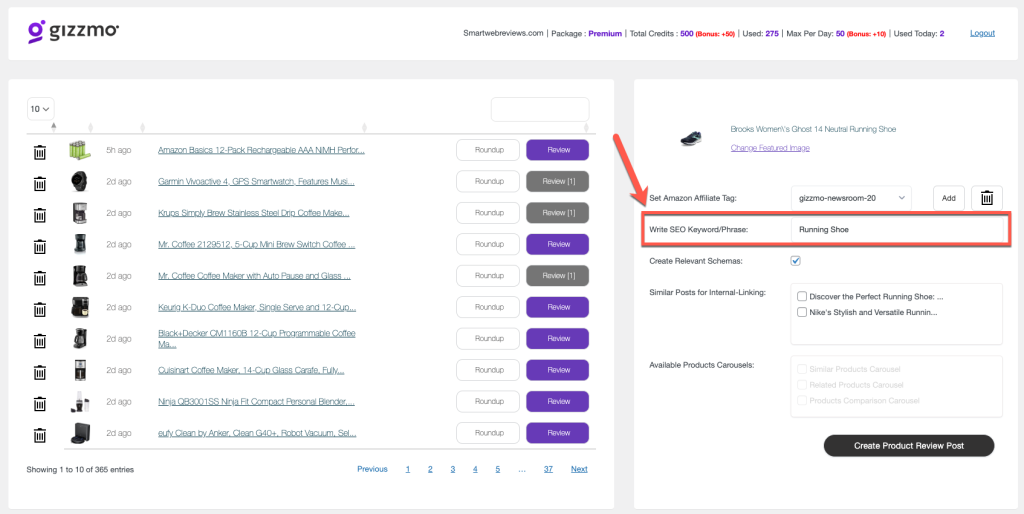In the vast and dynamic world of digital marketing, Search Engine Optimization (SEO) reigns supreme. It’s the secret sauce that can propel your content to the top of search engine results. But to really make your SEO strategy shine, you need to understand and effectively use focus keyphrases.
What is a Focus Keyphrase?
At its core, a focus keyphrase is the term you’d like your post to rank for in search engine results. When people punch this phrase into Google, Bing, or another search engine, you want your post to be right there on the first page, ready to answer their questions and solve their problems.
Previously, this was known as a focus keyword. But as the internet has expanded and become more sophisticated, it’s increasingly challenging to rank on just one word. As a result, a focus keyphrase often consists of multiple words.
Imagine you run a dog training school in Bakersfield, California. You might initially think you want to rank for the focus keyword “dogs.” However, this term is highly competitive, with countless websites vying for the top spot. A more realistic focus keyphrase might be “dog-friendly puppy training in Bakersfield.” This keyphrase is less competitive and more likely to attract users who are searching for your specific services.
Why is the Focus Keyphrase Important?
Picking the right focus keyphrase is crucial. If you choose incorrectly, you risk wasting your SEO efforts on a term that nobody is searching for. When selecting a focus keyphrase, you need to consider two key factors: your audience and your competition.
First, you must understand your audience. What are they searching for? What words are they using? Tools like Google Trends can help you figure this out, allowing you to compare keyphrases and see which ones are most commonly searched. For example, if you’re deciding between “puppy training” and “dog training,” Google Trends might reveal that people search for “dog training” more often.
Second, you must consider your competition. If you’re targeting a highly competitive keyphrase, you might struggle to rank. Try googling your chosen keyphrase and reviewing the first two pages of search results. How large are the companies that appear? Does your website have enough authority to stand out among them? Is your post capable of ranking among these search results?
Remember, you should only use a focus keyphrase once. If you optimize two posts for the exact same keyphrase, Google won’t know which one to show in search results, and both posts will rank lower. Avoid competing with yourself—optimize different articles for different aspects of a term.
The Types of Keyphrases
Keyphrases can be categorized into three types: head keyphrases, mid-tail keyphrases, and long-tail keyphrases.
- Head keyphrases are generic and highly competitive, attracting many searches but also being the hardest to rank for. For example, “puppy training” is a head keyphrase.
- Mid-tail keyphrases are more specific and are derived from the head keyphrase they’re associated with. Using our previous example, “dog-friendly puppy training” and “the benefits of puppy training” could be mid-tail keyphrases.
- Long-tail keyphrases are very specific and attract fewer searches. An example might be “what to expect from a dog-friendly puppy training in Bakersfield.” While these keyphrases attract less traffic, they usually have a higher conversion value as they focus more on a specific product or topic.
Whether you target long-tail keyphrases or head terms largely depends on your competition. If your niche is highly competitive, you may struggle
to rank for competitive head terms and should focus on longer tail keyphrases. If you face little competition, you might be able to rank for head terms.
Harnessing the Power of Gizzmo
Gizzmo offers a potent tool for your SEO efforts, making the process of choosing and using focus keyphrases simpler and more effective. With Gizzmo, you’re not alone in your SEO journey. It is designed to take your chosen focus keyphrase into account when crafting your articles, ensuring your content is primed for search engine success.
When you provide Gizzmo with your chosen keyphrase, it’s like giving a compass to a skilled navigator. Gizzmo intelligently weaves this keyphrase throughout your article in a natural, reader-friendly way. This isn’t just about keyword stuffing—Gizzmo understands that the best SEO practice is to make your keyphrase an integral part of valuable, engaging content.
Here’s how it works:
- Choose your focus keyphrase: Use your knowledge of your audience and your competition to select the best keyphrase for your content.
- Input your keyphrase into Gizzmo: Gizzmo’s user-friendly interface makes this step a breeze. (This is where you’d insert the screenshot showing where and how to input the keyphrase into Gizzmo.)
- Let Gizzmo do the work: Once your keyphrase is inputted, Gizzmo takes over, creating an article that not only incorporates your keyphrase but is also structured and written in a way that search engines (and your readers!) will love.
With Gizzmo, optimizing your content for SEO doesn’t have to be a chore. Instead, it becomes an intuitive part of the content creation process. So why not give Gizzmo a try and see how it can elevate your SEO strategy to new heights?


Conclusion
The focus keyphrase is the cornerstone of your SEO strategy. It is the term that you are optimizing your text for. As such, choosing your focus keyphrase requires careful consideration of search volume, the language your audience uses, and the level of competition.
Remember to consider whether to target head, mid tail, or long tail keyphrases based on your specific circumstances. While head keyphrases may get a lot of traffic, they are also very competitive. On the other hand, long tail keyphrases may get less traffic but can have a higher conversion value due to their specificity.
In our next installment, we’ll delve into how the Yoast SEO plugin can assist you in optimizing your text for the focus keyphrase you’ve chosen. Stay tuned to learn how to leverage this powerful tool to make your SEO efforts even more effective!
Remember, in the world of SEO, the focus keyphrase is more than just a buzzword. It’s a strategic choice that can make or break your content’s visibility on the web. So choose wisely, optimize effectively, and watch as your content climbs the ranks of search engine results.

